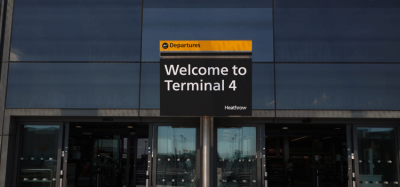The role of imaging technology
Posted: 11 April 2011 | Robin Kane, Chief Technology Officer and Assistant Administrator, Office of Security Technology at the Transportation Security Administration (TSA) | No comments yet
The Transportation Security Administration (TSA) is dedicated to protecting our Nation’s transportation systems and safeguarding the travelling public. We face an adaptive adversary who seeks vulnerabilities in our system and, as a result, TSA must employ new methods to stay ahead of evolving threats. Security technologies, such as Advanced Imaging Technology (AIT), are a critical part of this effort.
Based upon the latest intelligence and after studying all available technologies, the TSA has concluded AIT is the most effective method to detect threat items concealed on passengers while maintaining efficient checkpoint screening operations.
The Transportation Security Administration (TSA) is dedicated to protecting our Nation’s transportation systems and safeguarding the travelling public. We face an adaptive adversary who seeks vulnerabilities in our system and, as a result, TSA must employ new methods to stay ahead of evolving threats. Security technologies, such as Advanced Imaging Technology (AIT), are a critical part of this effort.
Based upon the latest intelligence and after studying all available technologies, the TSA has concluded AIT is the most effective method to detect threat items concealed on passengers while maintaining efficient checkpoint screening operations. Our work with AIT began in 2007 and has included testing and evaluation in both the laboratory and in airports. The agency tested and piloted the use of AIT at several airports around the country prior to the December 2009 attempted attack. As a result, TSA was able to accelerate deployment of AIT following the incident to enable our Transportation Security Officers to detect metallic and non-metallic threats quickly and effectively.
TSA employs two types of imaging technology, millimeter wave and backscatter. Millimeter wave technology bounces harmless electromagnetic waves off of the human body to create an image resembling a fuzzy photo negative, while backscatter technology uses an ionizing X-ray beam to create a reflection which resembles a chalk etching. Currently, the TSA has deployed nearly 500 units at 78 airports nationwide.
The safety of the travelling public is our priority. The TSA requires its technology to comply with scientific safety standards administered by the Health Physics Society and accredited by the American National Standards Institute. The radiation dose from backscatter AIT machines has been independently evaluated by the Food and Drug Administration, the National Institute of Standards and Technology, and the Johns Hopkins University Applied Physics Laboratory, all of which have affirmed that the systems comply with established standards for safety. A single screening using backscatter technology produces a radiation dose equivalent to approximately two minutes of flying on an airplane at altitude. Millimeter wave technology does not emit ionizing radiation and instead uses radio frequency energy.
As the TSA develops new technologies, we are also strengthening existing privacy protections. TSA takes all efforts to ensure passenger privacy with its use of imaging technology. The screening officer never views the image, and as an additional precaution, the image operator is remotely located. A privacy filter is applied to blur images, and the image is deleted after a passenger is cleared. Furthermore, in airports the technology does not have the capability to store or print any images.
In February 2011, the TSA began testing Automatic Target Recognition (ATR) software on millimeter wave imaging technology machines to further enhance our privacy protections. This software eliminates passenger-specific images and instead highlights anomalies on a generic outline of a person. If no anomalies are detected, an ‘OK’ appears on the monitor with no outline, and the passenger is cleared to continue. TSA is testing ATR in airports to help confirm laboratory test results that indicate it provides the same high level of security as the current imaging technology units.
By eliminating the passenger-specific image associated with the current version of imaging technology, a separate TSA officer will no longer be required to view the image in a remotely located viewing room. By removing this step of the process, imaging technology screening will become more efficient, expanding the throughput capability of the technology. The TSA anticipates that the use of the new software will also increase checkpoint through – put where imaging technology units are in place.
The TSA is currently testing the software at three airports: Las Vegas McCarran International (LAS), Hartsfield-Jackson Atlanta International (ATL), and Ronald Reagan Washington National Airports (DCA). If testing proves successful, the TSA could deploy the new software to millimeter wave imaging technology units at airports across the country.
AIT is merely one component of the TSA’s approach to aviation security. We are developing initiatives that are risk based and shift away from a ‘one-size-fits-all’ security approach at airport security checkpoints. This a direction in which we are already moving based upon the evolution of our multi-layered approach to transportation security. As TSA is better able to focus its resources, our Transportation Security Officers will be able to improve the passenger experience at security checkpoints. AIT and ATR will continue to play an important role in that evolution by streamlining the security process for passengers while ensuring that the TSA is employing the best available technology in the world.
The Screening Partnership Programme
The Screening Partnership Programme, also known as SPP or ‘Opt-Out’, is a unique approach to providing security screening services for air passengers and baggage. Under the programme, an airport operator may apply to have security screening conducted by personnel from a qualified private contractor working under Federal oversight.
The programme was designed to meet the requirement of the ‘Opt-Out’ provision established by the Aviation and Transportation Security Act of 2001, or ATSA. Airport operators have been able to apply to SPP to use private screeners since November 2004. Private contractor screeners are currently in place at 16 airports across the country, combining privatesector operational expertise with the TSA’s technology, experience and resources.
When a contract is awarded to an SPP airport, TSA works with the airport management and a qualified screening company to make a cost-effective and seamless transition from using TSA Transportation Security Officers to using private security screeners. Once the transition is complete, TSA’s Federal Security Directors ensure all security standards are met and maintained.
About the Author
Robin Kane became Assistant Administrator for the TSA’s office of security technology in June 2009, after serving in an acting role since December 2008.
As the assistant administrator, Kane serves as the agency’s chief technology officer overseeing the implementation and development of security technologies across multiple modes of transportation. He is responsible for the development, test and evaluation, acquisition and deployment, and the maintenance of all TSA security technologies and systems.
Mr. Kane joined the TSA in 2005 as a branch chief within TSA’s office of budget and performance. His previous responsibilities included managing the planning, programming, budgeting and execution of all technology programs totaling $1.5 billion. He has also served as the branch chief for law enforcement programs and all support programs.
Prior to TSA, Mr. Kane spent 20 years in the coast guard, where for nine years he carried out missions at sea. He also served in acquisition programs as Technical Director and Modeling and Simulation Manager and in offices responsible for implementing technical solutions to command and control requirements on afloat and ashore units.
Mr. Kane has a Bachelor of Science in ocean engineering from the Coast Guard Academy, a master of science in information systems from George Mason University, and a Naval War College diploma.
Are you ready to meet the expectations of Gen Z travellers? Join our virtual panel to discover how airports can engage the next generation of passengers.
16 Oct 2025 | 14:00 PM BST | FREE Virtual Panel Discussion
Join us for this interactive session where industry leaders will explore how airports are adapting to the needs and values of Gen Z, the first truly digital-native, socially conscious, and tech-savvy generation.
What You’ll Learn:
- What drives Gen Z travel decisions, and how to respond
- How to harness digital tools, social media, and mobile-first strategies
- How sustainability, inclusivity, and personalised experiences shape Gen Z’s airport expectations
- Real-world examples from leading airports that are successfully engaging younger travellers
Don’t miss your chance to learn from the airports leading this change – Register Now – It’s Free!


















